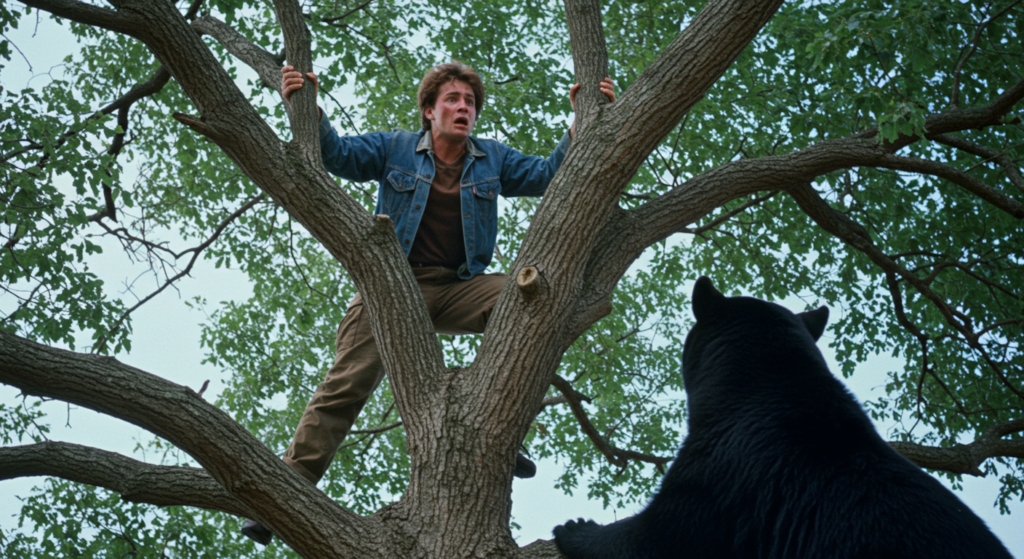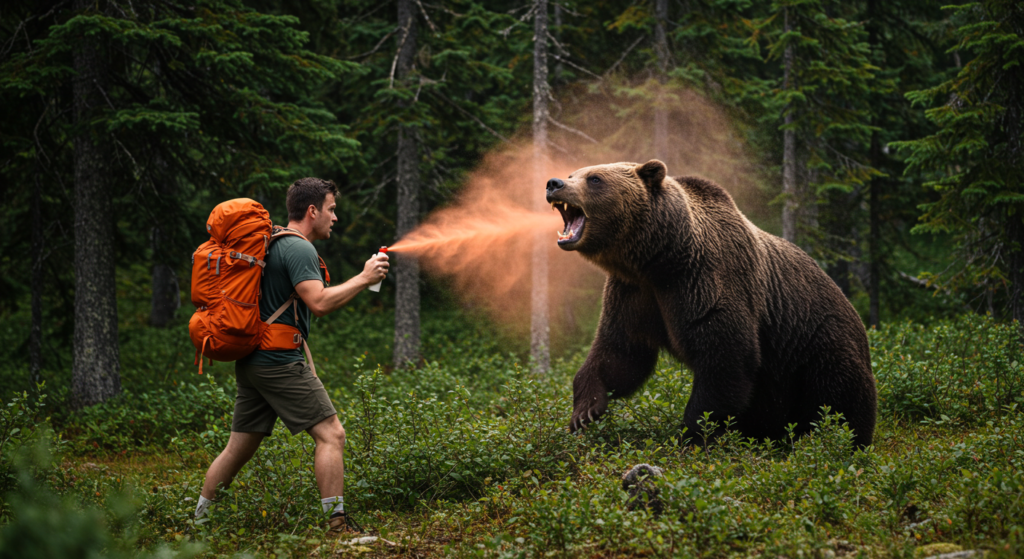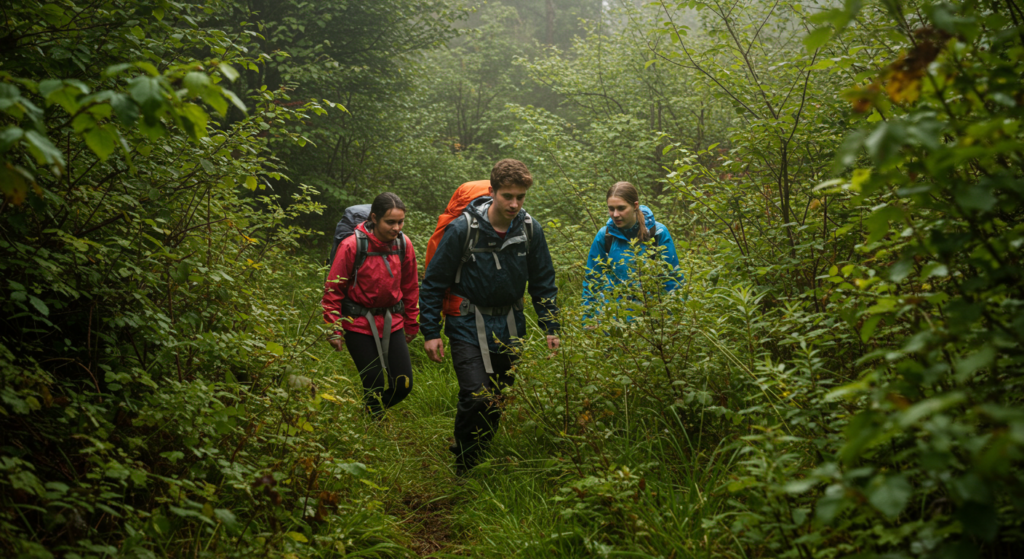The Truth About Bear Attacks and Why Your Strategy Might Be All Wrong
The thought of bear attacks is terrifying, but what if everything you think you know about surviving one is wrong?Most people believe they know how to handle a bear encounter, stand your ground, play dead, or climb a tree, but the truth is far more complex. Outdated advice, myths, and misinformation could put you in greater danger.
The latest research and real-life incidents reveal surprising facts about bear behavior and how to avoid deadly encounters. Whether you’re an experienced hiker, camper, or outdoor enthusiast, understanding the truth about bear attacks could save your life.
The 4 Biggest Myths About Bear Attacks

Myth 1: Bears Are Aggressive and Attack Without Warning
Many people imagine bears as bloodthirsty predators lurking in the woods, waiting for the perfect moment to strike. Hollywood films and sensationalized news reports have reinforced the idea that bears seek out humans as prey. However, the reality is quite different. 98% of bear encounters end without aggression when people respond appropriately. Most bears prefer to avoid humans and will retreat if given the chance. The majority of attacks occur because the bear feels threatened, surprised, or is protecting its cubs.
Instead of viewing bears as natural enemies, it’s important to understand their behavior. Bears typically attack for three main reasons: defensive aggression, when a bear feels cornered or is protecting its young; surprise encounters, when a hiker unknowingly gets too close; and predatory intent, which is exceedingly rare but more likely with food-conditioned or sick bears. Knowing what triggers an attack, and how to react appropriately, can mean the difference between a close call and a tragedy.
Myth 2: Playing Dead Always Works During Bear Attacks
You’ve probably heard the advice: if a bear attacks, drop to the ground, cover your head, and play dead. While this strategy can work in some situations, it’s not a universal rule—and applying it at the wrong time could be fatal. Playing dead is only recommended during a defensive grizzly bear attack, meaning the bear perceives you as a threat rather than prey. In these cases, lying face down with your hands behind your neck and legs spread apart (to prevent the bear from flipping you over) may convince the bear that you are no longer a danger.
However, playing dead does not work against a predatory bear attack or attacks by black bears. If a bear continues to bite and maul even after you’ve gone limp, this means the attack is no longer defensive. At this point, you must fight back with everything you have, punching, kicking, using rocks, sticks, or anything available. A study published in the Journal of Wildlife Management found that individuals who fought back against black bears were far more likely to survive than those who remained passive. Recognizing the difference between a defensive attack and a predatory attack is crucial for survival.
Myth 3: Climbing a Tree Will Save You
Many hikers believe that if they encounter a bear, they can simply scramble up the nearest tree and wait for the danger to pass. This might have worked in childhood cartoons, but in real life, it’s a dangerous and ineffective strategy. Both black bears and grizzlies are excellent climbers, with strong limbs and sharp claws that allow them to ascend trees much faster than humans. In fact, black bears regularly climb trees to escape predators or search for food, making them far more agile than you might expect.
Even if you manage to climb high enough, you’re not necessarily safe. A bear that feels provoked or is in pursuit may wait at the base of the tree, making escape impossible. Some bears have even been known to shake or break tree branches to dislodge a climber. Instead of wasting valuable time trying to climb, the best defense is to stay on the ground, back away slowly, and have bear spray ready. If a bear is charging, deploying bear spray at the right moment is far more effective than attempting to out-climb an animal built for the wilderness.
Myth 4: Running Away From a Bear Attack Is a Good Idea
The instinct to run when faced with danger is deeply ingrained in humans, but in the case of a bear encounter, it could be the worst possible response. Bears can reach speeds of 35 mph, which is much faster than the average human sprinting at top speed. Running triggers a bear’s natural chase instinct, much like a dog chasing a fleeing animal. This is especially true for young bears or food-conditioned bears that have learned to associate humans with food.
Instead of running, the best strategy is to stay calm, stand your ground, and assess the situation. Slowly backing away while speaking in a calm voice signals to the bear that you are not a threat. If the bear charges, resist the urge to turn and flee. Many charges are bluff charges, meaning the bear is trying to scare you away rather than attack. If the charge is real, your best defense is bear spray, which has been proven to stop bears in their tracks in over 90% of cases. Knowing how to react calmly and correctly in a bear encounter can make all the difference in your survival.
New Strategies to Avoid and Survive Bear Attacks

1. Bear Spray Is Your Best Defense
When it comes to defending yourself against a bear attack, bear spray is by far the most effective tool—more reliable than firearms, whistles, or climbing a tree. A study by the Journal of Wildlife Managemen found that bear spray successfully stopped aggressive bear encounters 92% of the time, whereas using a firearm only had a 50% success rate in deterring an attack. This is because bear spray neutralizes the bear without injuring it, whereas a wounded bear can become even more aggressive.
Bear spray is a highly concentrated pepper spray (capsaicin) designed specifically for deterring bears. When sprayed, it creates a wide fog-like cloud that temporarily blinds, disorients, and causes intense irritation to a bear’s eyes, nose, and respiratory system. This overwhelming sensory overload disrupts the bear’s charge and gives you time to escape without causing permanent harm to the animal.
Unlike a firearm, which requires precise aim under extreme stress, bear spray is designed to be effective even if your aim is slightly off. The expanding cloud ensures a greater chance of stopping the bear before it reaches you.
Why Bear Spray Works Better Than Guns
- Higher Success Rate – Studies show that 92% of people who used bear spray escaped unharmed, compared to only 50% of those who relied on firearms.
- Easier to Use Under Stress – In a high-pressure situation, accurately firing a gun at a charging bear is nearly impossible. Bear spray covers a wide area, making it far more forgiving.
- No Risk of Aggravating the Bear – If a bullet doesn’t immediately kill or incapacitate the bear, it may only make the animal more aggressive. Bear spray repels without provoking.
- Safer for You and Others – A misplaced shot can hit a hiking partner, ricochet, or leave a wounded bear in the area. Bear spray neutralizes the threat without lasting damage.
6 Tips for Using Bear Spray Properly During Bear Attacks
Carrying bear spray isn’t enough, you need to know how and when to use it. Simply having it in your backpack won’t help if you don’t have time to access it in an emergency. Here’s how to ensure you’re prepared:
- Keep It Accessible – Bear spray should always be in a holster on your belt or chest—not buried in your backpack. Many encounters happen quickly, and you won’t have time to dig for it.
- Practice Before You Need It – Buy a practice canister or an expired can to test your reaction time. Learn how to remove the safety clip and deploy the spray in under two seconds.
- Deploy at the Right Distance – When a bear is 30-40 feet away and charging, spray in a slightly downward angle to create a barrier between you and the bear. This ensures the bear runs into the cloud.
- Use Short Bursts – Hold the trigger for 1-2 second bursts rather than emptying the can all at once. This conserves spray in case you need multiple bursts.
- Know the Wind Direction – Bear spray can blow back into your face. If possible, adjust your stance so the wind carries the spray toward the bear, not you.
- Do Not Use Like Bug Spray – Bear spray is not a repellent you apply to yourself, your gear, or your campsite. It is only meant to be used when a bear is actively approaching or charging.
2. Make Noise to Avoid Bear Attacks

One of the biggest reasons bear attacks happen is because people accidentally startle a bear at close range. Bears, especially grizzlies, have a strong defensive instinct when they feel threatened or cornered. If a bear doesn’t hear you approaching, it might react aggressively when suddenly confronted. Many surprise encounters happen in dense vegetation, near loud rivers, or in areas with poor visibility, where bears are unable to detect humans until it’s too late.
Making noise as you hike gives bears plenty of warning and allows them to move away before an encounter even happens. Unlike predators like mountain lions, bears aren’t actively looking to stalk humans, and in most cases, they will avoid people if given the chance. A study conducted in Glacier National Park found that groups of hikers who talked loudly or made noise had significantly fewer bear encounters compared to solo hikers moving quietly.
5 Tips for Making Noise in Bear Country
- Travel in Groups – Research shows that groups of three or more people are far less likely to be attacked. Bears perceive larger groups as more intimidating, making them less likely to approach.
- Call Out Frequently – Every few minutes, call out in a calm but firm voice, especially when hiking through thick brush, over hills, or near rivers where the sound of rushing water might mask your approach. Phrases like “Hey bear!” or “Coming through!” work well.
- Clap or Use Bear Bells (With Caution) – Clapping hands or using bear bells can be helpful, but studies suggest that human voices are more effective. A bear might ignore bells, but a human voice is more distinct and easier for them to recognize as a potential threat.
- Avoid Dawn, Dusk, and Nighttime Hiking – Bears are most active early in the morning, late in the evening, and at night. If possible, stick to daytime hikes when visibility is better and bears are less likely to be out foraging.
- Be Extra Loud in Blind Spots – Areas with thick brush, winding trails, and berry patches are high-risk zones. Bears frequently feed in these locations, so making noise in advance can prevent an accidental close encounter.
3. Store Food Properly to Prevent Attracting Bears
Bears have an incredible sense of smell, seven times stronger than a bloodhound’s, allowing them to detect food from miles away. This is why improper food storage is one of the leading causes of dangerous bear encounters in the wild. Once a bear associates humans with food, it loses its natural fear and becomes a problem bear, increasing the likelihood of aggressive behavior. The phrase “A fed bear is a dead bear” exists for a reason, many bears that repeatedly seek out human food end up being euthanized to prevent future attacks.
Bears aren’t just drawn to obvious food items like meat, fish, or granola bars. Anything with a strong scent, like toothpaste, deodorant, sunscreen, or even an empty snack wrapper, can attract them. To minimize risk, proper food storage is essential when camping, hiking, or spending time in bear country. Most dangerous bear encounters happen around campgrounds and food sources.
One of the most famous cases of improper food storage leading to tragedy happened in Glacier National Park in 1967, known as the Night of the Grizzlies. Due to careless food handling, two different grizzly bears had become conditioned to human food, and on the same night, both attacked separate campsites, resulting in two fatalities. This event forever changed bear safety protocols in national parks.
5 Tips for Storing Food in Bear Country
Use Bear-Proof Containers – Many national parks require the use of bear canisters, which are hard-sided, locking containers designed to prevent bears from accessing food. If a bear gets into your food supply, it becomes conditioned to seek out campsites for an easy meal.
- Hang Your Food Correctly – In areas where bear canisters aren’t required, food must be hung at least 10-15 feet off the ground and 4 feet away from the trunk of a tree. Bear hangs make it difficult for bears to reach, even if they try to climb.
- Keep Food Away from Your Sleeping Area – Never store food, trash, or scented items inside your tent. Keep them at least 100 yards away from where you sleep to prevent bears from associating your sleeping area with food.
- Use Odor-Resistant Bags – Special odor-proof storage bags can help reduce food smells, but they are not a substitute for proper storage.
- Dispose of Trash Properly – Bears are just as likely to be drawn to food scraps, wrappers, and used cookware as they are to actual food. Pack out all trash and dispose of waste properly in bear-proof trash cans.
- Never Leave Food Unattended – Even stepping away from your backpack for a few minutes can be enough time for a bear to investigate. Always keep an eye on your food and store it securely whenever it’s not in use.
The Best Way to Stay Safe in Bear Country
Bear attacks are rare, but being unprepared can turn a close encounter into a deadly situation. The best way to avoid an attack is to prevent one from happening in the first place. Carrying bear spray, making noise, storing food properly, and understanding bear behavior are proven strategies for reducing risk.
Old myths can get you killed; modern science and real-life experience show that survival depends on knowledge, preparation, and the right response.
Before your next adventure into bear country, make sure you’re following the best practices backed by experts. The truth about bear attacks might surprise you, but knowing it could save your life.
